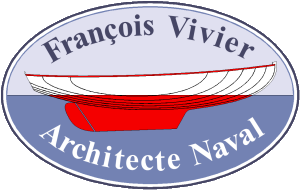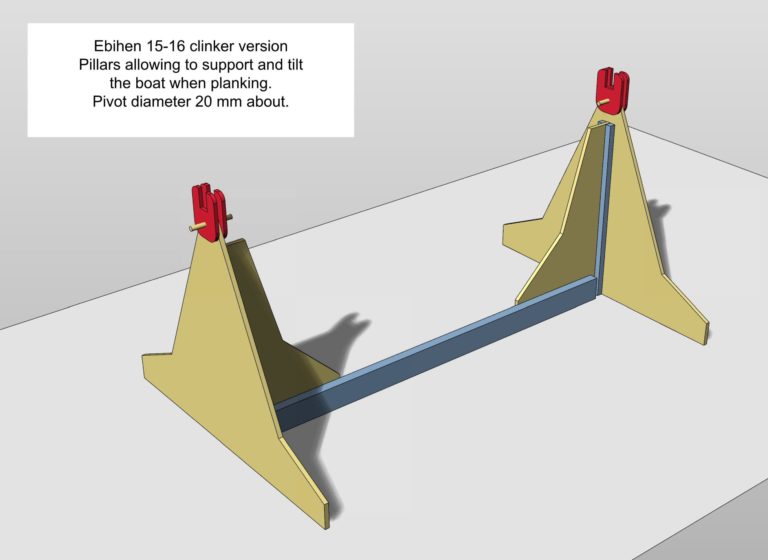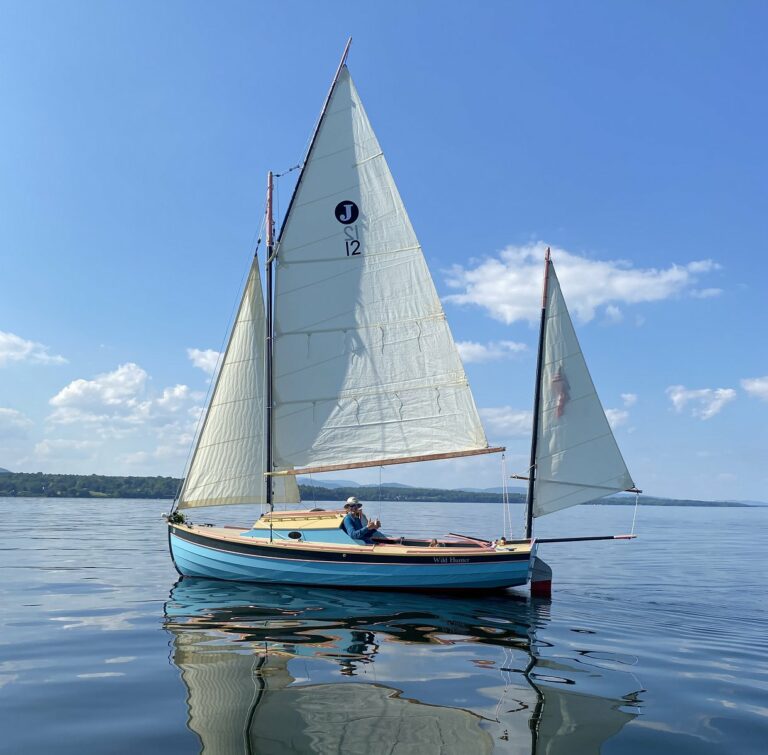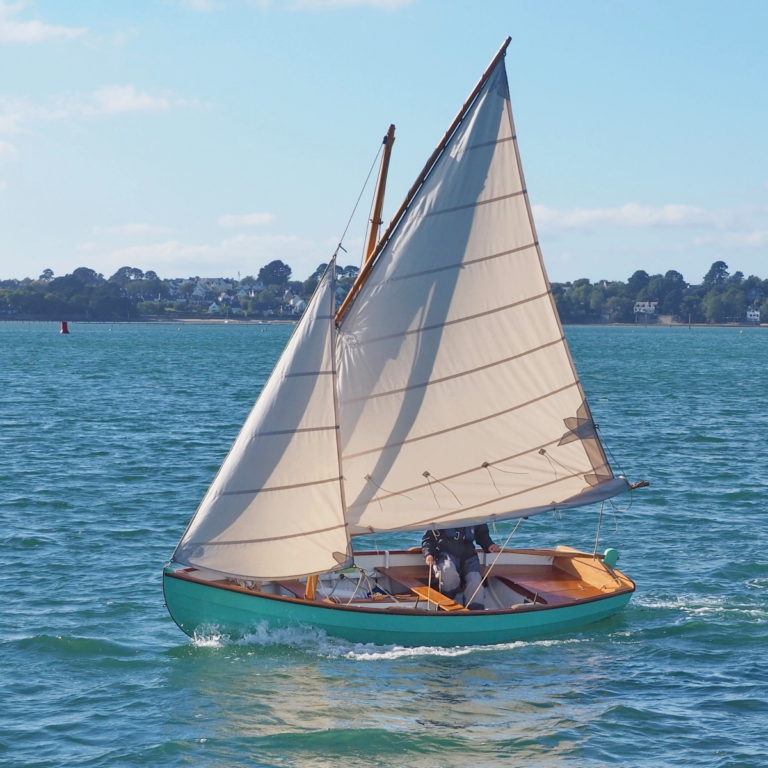Koalen 18: conversion into a twinkeel
- Post author:Francois Vivier
- Post published:3 October 2023
- Post category:Actualités / Services
- Post comments:0 Comments
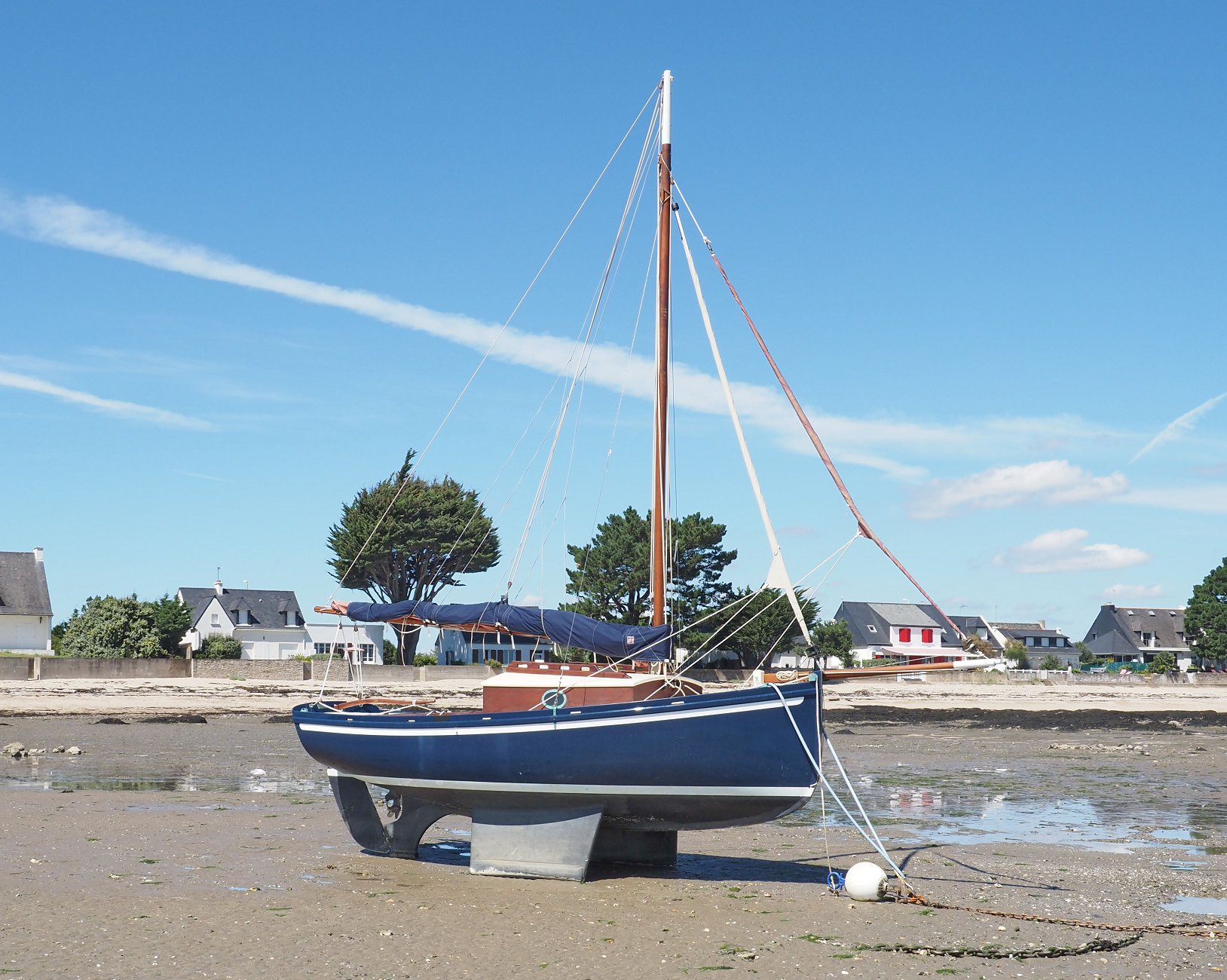
Grand-Largue boatbuilder built a Koalen 18 in 2017 for a person wishing to anchor her boat in front of its holiday home in Damgan, South Britanny, at the mouth of river Vilaine. A traditional keelboat may safely dry out with beaching legs and seemed suited to the chosen anchorage. Unfortunately, this anchorage is poorly protected from southerly winds, even if the mooring is well located in the cove, protected by a barrier of rocks. Sometimes, the beaching legs rest on the trench produced by the keel during previous tides, resulting in broken beaching legs and even severely damaged hull. In short, after the first seasons, we had to find a solution: sell the boat and buy another one?
Then, the owner of this Koalen 18 consulted me: could this boat be converted into a twin keel? I admit to being initially reluctant about this idea, representing a significant change in the boat’s structure. But this gentleman insists, and I examine the plans, especially since I like challenges. The Koalen 18 is a small boat (5.5 m long) with a robust plywood structure. It was designed entirely in 3D, which makes simulations easier. We imagine twin keels made of very thick plywood (45 mm) fitted with two lead half-torpedoes at their bases (75 kg each, giving 300 kg of ballast weight). A slot will be made in the side planking, and the keels, cut into a comb to fit the internal bulkheads, will be slipped into it. Under the berths, the inside structure is reinforced with floors and stringers. Then, the existing keel is cut out, keeping only the aft end and the rudder.
Grand-Largue made a quote, and I provided assembly diagrams and CNC cutting files for all the new parts. Next summer, a twin keel Koalen 18 was delivered.
During my summer cruising in 2023, I made a call in Penerf, right next door. We make an appointment for a test. Gilles says he is very satisfied with the result, which meets his wishes: make day outings in the Vilaine bay. The upwind ability has somewhat deteriorated, but we choose our route according to the wind for day sailing as in the old times. What remains is the pleasure of steering your boat freely and taking your grandchildren on board! And there is no longer any problem with beaching on bad weather days. Moreover, the only other sailboat in the bay is a larger GRP twin keel.
Gilles took me on board for a first outing. Then we sailed together, me on my Pen-Hir, to take photos. I wanted to get some feedback. For a long time, I had a favourable opinion regarding twin keels. Well designed, the performance remains comparable to that of a centreboarder, with which we share the advantage of easy beaching. It has even been shown that with well-designed appendages, the twin keel loses a little ground upwind but does not give up on other points of sail. What about the Koalen 18? Upwind, we notice a new noise due to the waves around the windward keel coming out of the water when heeling. There is also a loss of upwind heading, which was impossible to assess precisely. The hull of the Koalen 18 is made up of a developable bottom planking and a cold moulded plywood side planking. A reinforced stringer is at the interface, and the keels have to be freed from it. We placed them outside, so quite apart, probably too far apart. Furthermore, we have retained the aft part of the old keel and the rudder having a somewhat important rake. This is, of course, the consequence of transforming an existing boat. On a new boat, we would adopt an almost vertical rudder and closer keels so that the performance remains reasonably close to that of the keelboat. The structure, typical on my wood-epoxy boat plans, consisting of an eggbox of transverse and longitudinal bulkheads, allows a structurally sound installation of side keels. The twin keel is both an alternative to the keelboat and the centreboarder. Compared to the latter, which retains the advantage of launching from a trailer, the drawbacks of a centreboard are eliminated: higher ballast centre of gravity, loss of cabin space, and maintenance. For the keelboat, we eliminate the constraints of the beaching legs.
